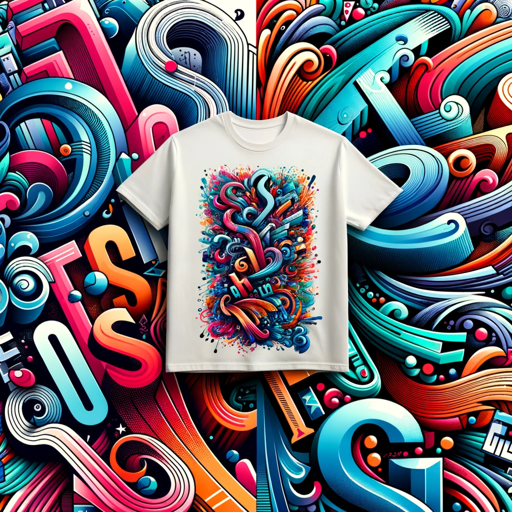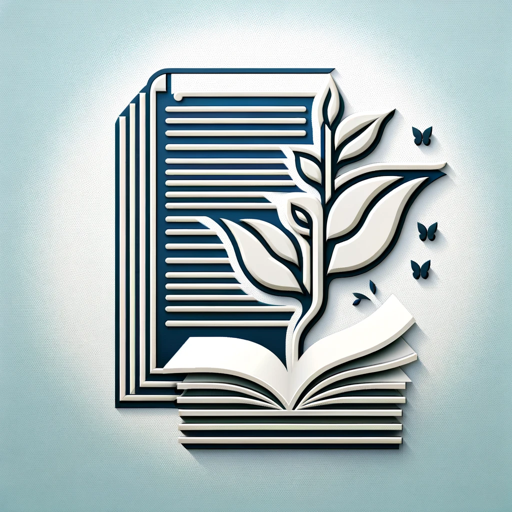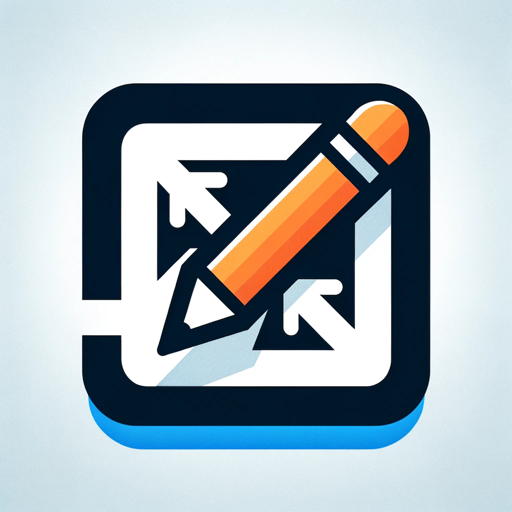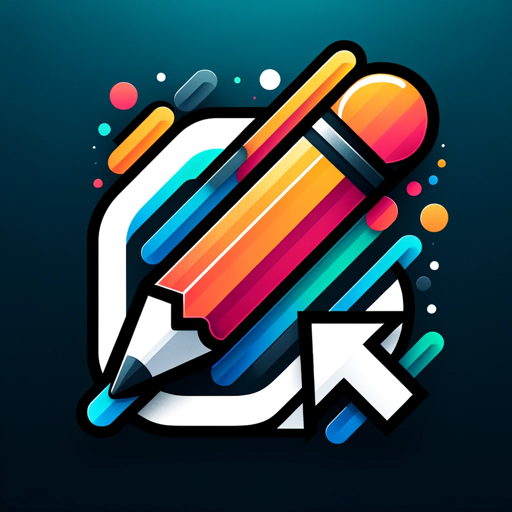Typography Layout Advisor-AI typography layout advisor
AI-powered guidance for better typography.
Can you suggest fonts for a modern layout?
How do I establish hierarchy in my typography design?
What color palette complements this font?
Could you provide a critique of this typography layout?
Related Tools
Load More
LaTeX Helper
A precise LaTeX assistant for academic content.

Typography Designer
Creates pure designs trending on Pinterest.

Font Stylist
Enter the name of your niche or describe your tshirt design or message to receive trendy and appropriate font suggestions to help bring your concept to life!

Doc Styler
Expert in Word doc formatting. Just paste in your text!

LaTeX assistant
Focuses on LaTeX document enhancements

Creative Design Advisor
I transform your photos into artistic DALL-E prompts.
20.0 / 5 (200 votes)
Detailed Introduction to Typography Layout Advisor
Typography Layout Advisor is a specialized tool designed to offer expert guidance in creating high-quality, visually compelling typography layouts. The primary function of the advisor is to assist users in making informed design decisions based on typography principles such as hierarchy, font pairing, whitespace management, contrast, and alignment. Whether designing websites, magazines, posters, or digital advertisements, the Typography Layout Advisor provides comprehensive advice to optimize readability and aesthetic appeal, ensuring that the core message of the design is effectively communicated. It acts as both a critique tool and a creative guide, offering suggestions on how to improve existing layouts or create new ones from scratch. For example, in a scenario where a user is designing a magazine cover, Typography Layout Advisor might suggest specific font pairings (e.g., serif and sans-serif combinations) that enhance the headline’s impact while maintaining body text readability. It might also recommend adjusting leading (line-spacing) and kerning (space between characters) to refine the visual harmony of the design. Through such advice, the advisor ensures that typographic elements contribute to an overall cohesive and polished layout.

Main Functions of Typography Layout Advisor
Font Selection and Pairing
Example
A designer working on a digital advertisement for a tech company might receive guidance on selecting a clean, modern sans-serif font for headlines and pairing it with a more neutral serif font for body text to achieve a professional and approachable feel.
Scenario
This function is used in projects where font choices play a critical role in brand identity and message clarity. The Typography Layout Advisor helps by suggesting complementary fonts that align with the tone and objectives of the design.
Establishing Hierarchy
Example
A web designer may need to differentiate between headings, subheadings, and body text on a homepage. The advisor could suggest using varying font sizes, weights, and colors to create a clear distinction between each level of text, guiding the user’s eye through the content.
Scenario
This is especially valuable in content-heavy designs, such as news websites or academic reports, where readers need a clear visual pathway to navigate information efficiently. The advisor ensures that typographic hierarchy improves usability and readability.
Whitespace and Layout Optimization
Example
For a print magazine spread, a designer might struggle with cramped layouts. The Typography Layout Advisor can recommend adjustments in margin widths, line spacing, and column structure to create better balance and improve text flow.
Scenario
Whitespace management is crucial in projects where visual clutter can hinder the reader's experience. This function helps maximize the design's breathing room, making the content more accessible and engaging.
Ideal Users of Typography Layout Advisor
Graphic Designers and Layout Artists
These users benefit from the Typography Layout Advisor’s detailed insights into creating harmonious and functional typography in both digital and print media. Whether working on branding projects, publications, or web design, they can refine their layouts to align with best practices and enhance the viewer’s experience.
Content Creators and Marketers
Marketers and content creators, especially those who work on social media, blogs, and advertising, can leverage the Typography Layout Advisor to ensure that their message is conveyed clearly and effectively through well-structured typography. The tool helps in balancing aesthetics with readability, which is essential for engaging audiences and driving conversions.

Guidelines for Using Typography Layout Advisor
Step 1
Visit aichatonline.org for a free trial without login, no need for ChatGPT Plus.
Step 2
Familiarize yourself with the key design principles like typography hierarchy, readability, and contrast before starting.
Step 3
Identify your layout needs, whether it's for academic papers, marketing materials, or digital interfaces, and gather relevant content.
Step 4
Input your specific queries or upload your current design draft to receive tailored advice on typography, font choice, and alignment.
Step 5
Review the expert suggestions, implement changes, and iterate the design based on feedback for an optimal result.
Try other advanced and practical GPTs
Website Wizard by B12
AI-Powered Website Creation Made Easy.

SFDC Admin
AI-powered Salesforce Administration

Product Prodigy: Startup Guide and Web Mentor
AI-powered startup and web mentor

Business Analyst
AI-driven business insights and analysis.

Sarcabot
AI-Powered Sarcasm at Your Fingertips.

Essay Grader Professor
AI-Powered Essay Grading Simplified

App Icon Generator
AI-powered icon resizing for apps

Indie Dev Assistant
AI-powered support for indie game developers

Minimalistic Logo
Crafting minimalistic logos with AI precision

Generating Content Topics by Growthturn
AI-Powered Tool for Effortless Content Planning

Reputation Builder Brainstormer
AI-powered reputation growth made easy.
Logo Creator Pro GPT
AI-Powered Logo Creation Simplified

- Graphic Design
- Print Media
- UX/UI
- Web Layout
- Typography Critique
Frequently Asked Questions about Typography Layout Advisor
What kind of advice does Typography Layout Advisor provide?
Typography Layout Advisor offers guidance on typography design, including font selection, layout structure, readability enhancement, color contrast, and grid system alignment.
Can I use this tool for both print and digital designs?
Yes, Typography Layout Advisor is suitable for both print and digital designs. It can help optimize layouts for websites, mobile applications, posters, and academic papers.
Do I need design experience to use Typography Layout Advisor?
No design experience is necessary. The tool is accessible to beginners, providing detailed explanations and suggestions, while also being robust enough for professionals.
How does Typography Layout Advisor improve readability in my design?
It focuses on creating a clear hierarchy through font sizes, spacing, and alignment. It also ensures sufficient contrast between text and background, improving readability for different audiences.
Does the tool support multiple languages and font styles?
Yes, the Typography Layout Advisor supports a variety of languages and font styles, enabling users to experiment with different typographic settings to suit diverse linguistic needs.